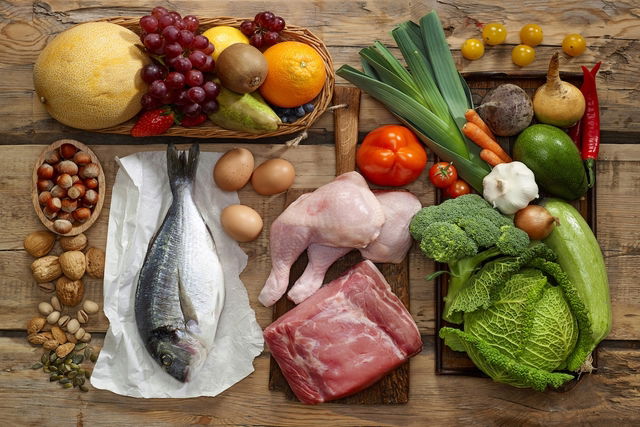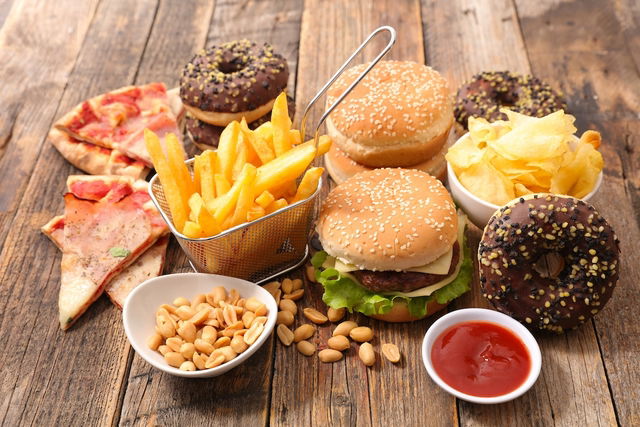An H pylori diet is characterized by being low in fat and made-up of easily digestible foods, like peeled and cooked fruits and vegetables. Meals should be small but frequent, and you should aim for 5 to 6 meals per day.
Patients with H.pylori should also drink fluids between their main meals and not during, and they should eat slowly and chew food thoroughly. Caffeine and alcohol should also be reduced or avoided during treating.
H. pylori is a bacteria that lives in the stomach and normally causes gastritis. Leaving it untreated may also lead to ulcers, stomach cancer, vitamin B12 deficiency, anemia, diabetes and fatty liver. Therefore, if you notice symptoms of H. pylori, it is important to consult a gastroenterologist to begin treatment promptly.

What to eat
Foods that help reduce symptoms and promote a speedy recovery when treating an H. pylori infection include:
1. Easily digestible carbohydrates
It is common to experience discomfort and other gastritis symptoms when you have an H. pylori infection, which is why patients are advised to consume easily digestible grains, such as white rice, white bread, white pasta, crackers, corn or wheat starches. These are high in starch and low in fiber.
When treatment begins to take effect and the discomfort begins to subside, whole grain foods can be gradually incorporated back into the diet, according to the person's tolerance.
2. Fresh fruits and vegetables
Patients experiencing symptoms like heartburn and/or stomach pain should opt for peeled and cooked fruits and vegetables with any seeds removed. Taking these measures lowers the fiber content in fruits and vegetables, making them much easier to digest and eliminate.
The most recommended fruits to eat with H. pylori include peeled and/or cooked apples and pears, bananas, watermelon, melon and papaya.
3. High protein foods
Some high protein foods, such as white meat, fish, eggs, white or low-fat cheeses, and lean red meats tend to have a lower fat content. This type of protein is easier to digest because it it is quickly broken down in the stomach, preventing the appearance of symptoms like heartburn.
Also recommended: What Foods Are High in Protein? 36 Animal & Plant-Based Sources tuasaude.com/en/high-protein-foods4. Probiotics
Probiotics are present in foods such as yogurt and kefir, and can also be taken as supplements, in powder or capsule form.
Probiotics are formed by good bacteria that live in the intestine and stimulate the production of flora that fight this bacteria and decrease the side effects that appear during the treatment of the disease, such as diarrhea, constipation and poor digestion.
Check out a list of probiotic foods that you can incorporate into your diet.
5. Omega-3 and omega-6
Omega-3 and omega-6 help to reduce stomach inflammation and prevent the growth of H. pylori, helping to treat the disease. These good fats can be found in foods like fish oil, olive oil, carrot seeds and grapefruit seed oil.
Learn more about foods with omega-3 that you can add to your H. pylori diet.
3-day meal plan
The following table outlines a sample of a 3-day meal plan that provides examples of what to eat when treating H. pylori:
The quantities included in this meal plan vary according to age, sex, physical activity and health history. Ideally, you should see a registered dietitian for a complete assessment and personalized meal plan that meets your health needs and goals.
During and after treatment, it is important to always wash fruits and vegetables well before consuming them, as H. pylori can be present in raw vegetables. Find out how H. pylori is transmitted.
What to avoid eating during treatment

During treatment it is important to avoid eating foods that can irritate the stomach or that may stimulate the secretion of gastric juice, as well as foods that worsen side effects. It is important to avoid eating the following:
- Coffee, chocolate and black tea, because they contain caffeine, a substance that stimulates stomach movement and gastric juice secretion, causing more irritation;
- Soft drinks and fizzy drinks, as they distend the stomach and can cause pain and acid reflux;
- Alcoholic beverages, because they increase stomach inflammation;
- Sour fruits like lemon, orange and pineapple, as they can cause stomach pain and heartburn;
- Pepper and spicy foods such as garlic, mustard, ketchup, mayonnaise, Worcester sauce, soy sauce, garlic sauce and stock cubes;
- Fatty meats, fried foods and yellow cheeses, because they are rich in fat, which makes digestion difficult and increase the time that food stays in the stomach;
- Processed meats and canned foods, as they contain a lot of preservatives and chemical additives that can irritate the stomach and intestine, increasing inflammation.
Therefore, drinking more water and eating white cheeses and fresh fruits that can help to reduce stomach inflammation and regulate intestinal transit is recommended.
What to eat after treatment
Once discomfort and other symptoms resolve and the H. Pylori bacteria are eradicated, food from your regular diet can gradually be reintroduced. Check-out a sample meal plan of what to eat once treatment is completed and the infection has been cured:
The quantities and types of food in this meal plan can vary according to age, sex, physical activity and health history. You should ideally see a registered dietitian for a complete assessment and individualized meal plan.
How to relieve side effects from treatment
Treatment for H. pylori usually lasts about 7 days and involves the use of medication, specifically proton pump inhibitors (e.g. omeprazole and pantoprazole) and antibiotics (e.g. amoxicillin and clarithromycin). These are taken twice a day. Learn more about the most common symptoms of H. Pylori and how it is treated.
Common side effects of H. Pylori medication are:
1. Metallic taste in the mouth
This can happen early on in the treatment, and can worsen over time. To help treat this problem, you can add vinegar to your salads and sprinkle baking soda and salt on your toothpaste before brushing your teeth. This will help both neutralize the acids in the mouth and produce more saliva, which can get rid of the metallic taste.
2. Nausea and stomach pain
Nausea and stomach pain usually appear from the second day of treatment onwards. To prevent these symptoms from happening, it is important to drink plenty of water, rest, and eat easily digestible foods such as yogurt, white cheeses, and crackers.
Drinking ginger tea shortly after waking up and eating 1 slice of toast or 3 crackers, as well as avoiding large amounts of fluids in one sitting, are good ways of relieving morning sickness. Learn how to get rid of nausea naturally using tea recipes.
3. Diarrhea
Diarrhea usually appears after the third day of treatment, because antibiotics, in addition to eliminating H. pylori, also end up reducing the naturally-occurring intestinal flora, causing diarrhea.
Eating 1 plain yogurt a day and easily digestible foods such as soups, purees, white rice, fish and white meats is a good way to stop diarrhea and restore the intestinal flora. Check out other home remedies for diarrhea to help relieve loose stools from antibiotic use.
